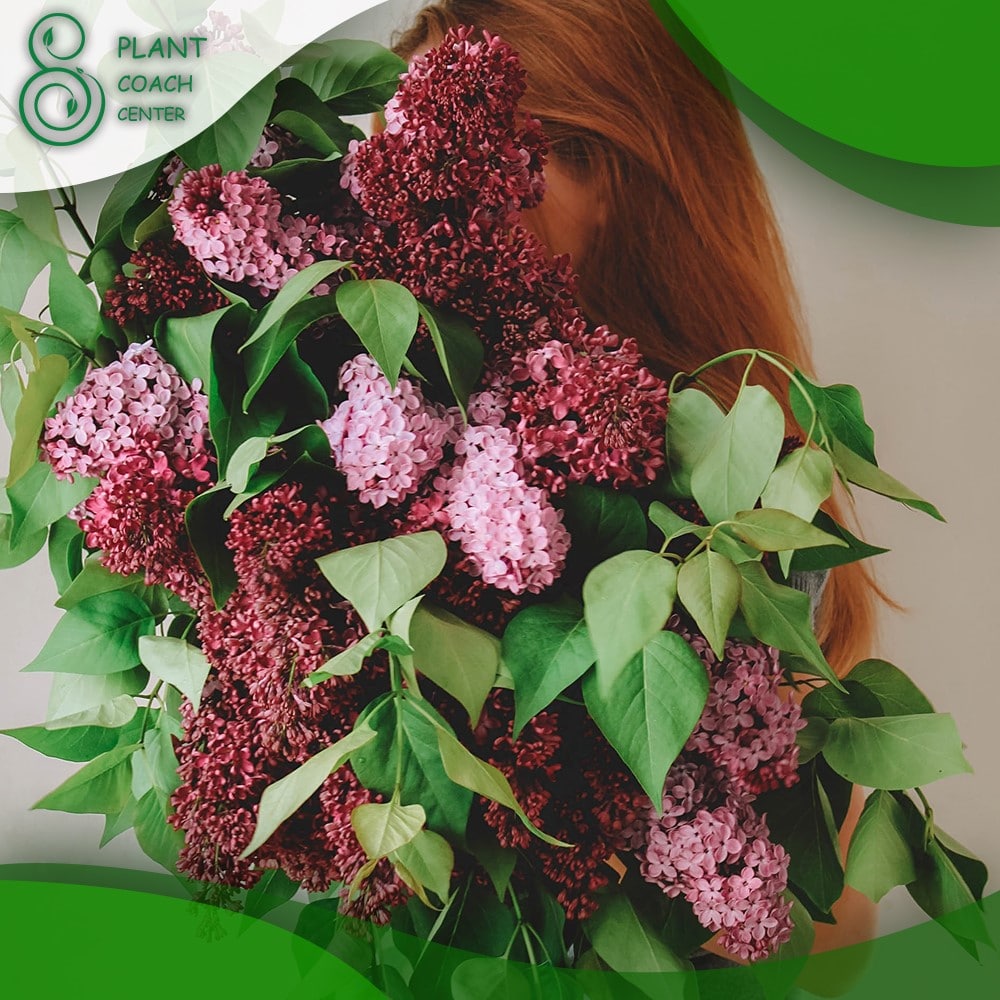When Should I Trim My Hydrangeas?
Welcome to the captivating world of hydrangeas, where nature’s artistry flourishes in the form of delicate blooms and vibrant foliage. As you revel in the beauty these plants bring to your garden or landscape, the question of when to trim them emerges as a vital enigma to unravel.
Picture this: the dappled sunlight filtering through a canopy of hydrangea blooms, each petal a brushstroke of color. The art of trimming hydrangeas goes beyond mere horticultural practice; it’s a choreography that harmonizes human touch with botanical exuberance. In this green-thumbed journey, we will dive deep into the seasons, unearthing the mysteries behind each growth phase and its corresponding pruning ritual.
From the whispered secrets of spring buds to the whispered promises of autumn winds, join us as we uncover the symphony of nature and the art of knowing precisely when these captivating shrubs should be trimmed to maximize their splendor.

Seasonal Pruning Delight
Navigating the intricate dance of hydrangea care starts with understanding the rhythm of the seasons and how it influences the optimal times for pruning. These enchanting shrubs have distinct growth patterns that can make all the difference in maintaining their health and encouraging prolific blooms. As winter’s icy grip loosens, early spring emerges as a prime opportunity for rejuvenation.
Just as the world awakens from its slumber, your hydrangeas also stir to life. This is the moment to assess the damage inflicted by winter, clearing away any withered or frost-damaged branches. Gently prune back to healthy buds, signaling to the plant that it’s time to put forth new growth.
As spring eases into the warmth of summer, your hydrangeas shift into full gear. The lush greenery and budding flowers draw you into a vibrant world. Yet, resist the urge to prune during this time, as you might inadvertently trim away the precious buds that promise summer’s glory. Instead, let them flourish and embrace their natural exuberance.
The transition to fall brings with it a contemplative aura. This is the juncture where your hydrangeas revel in their final act of the season. As the petals begin to fade and the temperatures cool, you can embark on a selective pruning adventure. Trimming back spent blooms not only tidies up the aesthetic but also channels the plant’s energy into strengthening roots and preparing for winter.
Harness the magic of each season – the dormant determination of winter, the verdant vibrancy of summer, and the reflective tranquility of fall – to guide your pruning endeavors. By aligning your efforts with the ebb and flow of nature, you’ll elevate the beauty of your hydrangeas and embrace the seasonal pruning delight they offer.
Decoding Growth Patterns
Hydrangeas, with their diverse varieties, are akin to a botanical tapestry, each thread woven with its own growth tendencies and pruning requirements. To master the art of trimming hydrangeas, it’s essential to decode these growth patterns.
Bigleaf Hydrangeas (Hydrangea macrophylla)
Recognized for their iconic globe-like clusters of blooms, bigleaf hydrangeas often exhibit two distinct types: mophead and lacecap. Mophead hydrangeas boast dense, spherical blossoms, while lace-cap hydrangeas flaunt flat, delicate colors surrounded by larger, showy petals. These varieties bloom on old wood – branches that formed the previous year. Thus, pruning immediately after flowering or early spring is critical to preserving their blossoming potential.
Panicle Hydrangeas (Hydrangea paniculata)
Panicle hydrangeas are renowned for their cone-shaped flower heads that evolve from creamy white to rosy pink as they mature. Unlike their bigleaf counterparts, panicle hydrangeas flower on new wood – the current season’s growth. Pruning during late winter or early spring, before new growth begins, helps shape the shrub and encourages sturdy branching, leading to larger and more abundant blooms.
Smooth Hydrangeas (Hydrangea arborescens)
Renowned for their snowball-like clusters of flowers, smooth hydrangeas bloom on new wood. Pruning in late winter to early spring, similar to panicle hydrangeas, promotes vigorous growth and abundant blooms.
Oakleaf Hydrangeas (Hydrangea quercifolia)
Distinctive for their oak-like leaves that turn stunning shades of red, orange, or burgundy in autumn, oakleaf hydrangeas bear elongated flower clusters. These hydrangeas also bloom on old wood. Prune after flowering, ensuring you don’t remove developing buds for next year.
Understanding these growth patterns is your compass, guiding you through the intricate labyrinth of hydrangea care. By deciphering the unique needs of each variety, you can tailor your pruning approach, setting the stage for a stunning display of blooms that harmonize with the rhythm of nature.
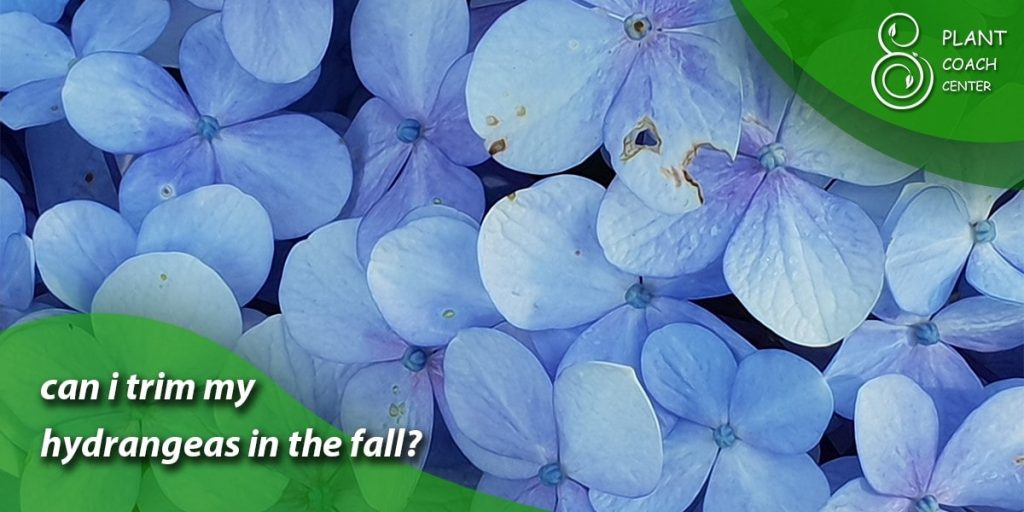
Winter Wonders
As the world outside retreats into a tranquil slumber, your hydrangeas prepare for their winter wonderland. Proper pruning during this season not only safeguards the health of these plants but also ensures a bountiful display of blooms come spring. Winter pruning is a delicate dance, a choreography of care that requires a gentle touch.
Once the leaves have fallen and the branches are bare, it’s the ideal time to inspect your hydrangeas closely. Look for signs of disease, dead wood, or damaged components, which can hinder growth and vitality. Carefully remove these unwanted elements with sharp, clean pruning shears, cutting just above a healthy bud or branching point. This simple act encourages the plant to channel its energy into fresh growth when the warmer days return.
Take care not to prune excessively during the winter months. The goal is not to sculpt the plant’s shape but to enhance its overall health and structure. Severe pruning during winter could stimulate new growth vulnerable to frost damage. Instead, focus on selective, thoughtful trimming that removes only what’s necessary.
Winter pruning also opens a window of opportunity for shaping your hydrangea. As you trim unwanted growth, consider the shrub’s natural form and how you can enhance its aesthetic appeal. This is especially true for panicle hydrangeas, which benefit from well-spaced, strong branches that can support their weighty flower heads.
Embrace the serenity of the winter season as you embark on this nurturing ritual. With each cut, you’re not just trimming branches; you’re tending to the heart of your hydrangeas, ensuring their resilience and readiness for the coming spring. The dormant months hold a special kind of magic – a quiet anticipation that echoes in the branches you touch, promising future beauty with every snip.
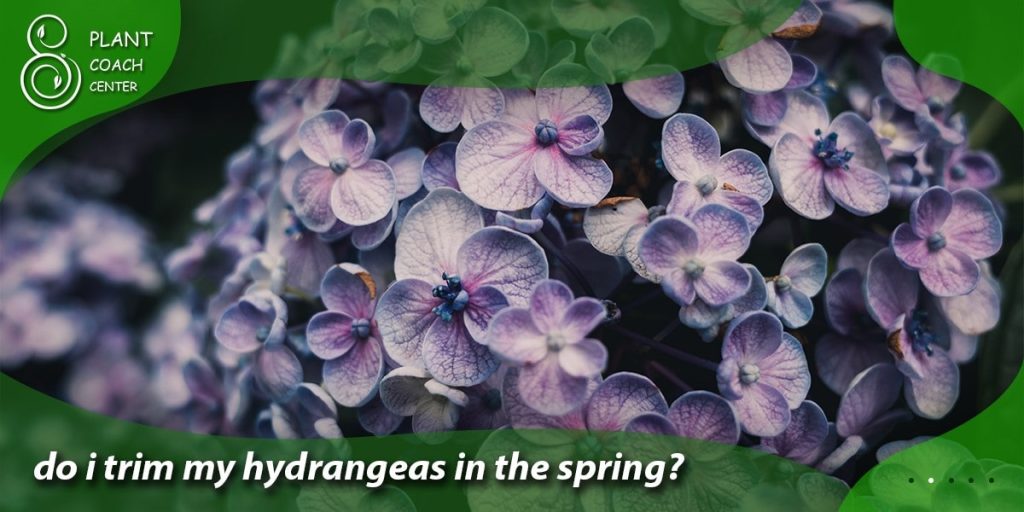
Spring Awakening
Ah, the sweet spring symphony – when nature shakes off its winter slumber and bursts forth in a riot of colors and fragrances. Your hydrangeas, too, are awakening from their dormant state, and knowing how to approach their pruning during this pivotal season is essential for maximizing their blooming potential.
Early spring is a delicate phase for hydrangeas, especially varieties like the bigleaf and oakleaf that bloom on old wood. As the first buds emerge, it’s a moment of anticipation and wonder. At this juncture, the goal of pruning is not to trim for shape or size but to nurture the emerging buds. Resist the urge to prune too aggressively, as it might inadvertently remove the flower buds patiently biding their time through the winter.
Instead, focus on tidying up any weak or crossing branches that might impede the growth of healthy new shoots. Gently remove dead wood, encouraging the plant’s energy to be channeled toward these fresh, eager buds. If your hydrangea has grown too large for its location, consider selective thinning to enhance air circulation and light penetration. This careful touch ensures that your hydrangeas will unveil their exuberant blooms as spring progresses, each petal a testament to the patience and care you’ve invested.
Welcome the springtime awakening with a sense of reverence and patience. Your hydrangeas are embarking on a journey of renewal, and your role as their steward is to gently guide them toward the total, resplendent bloom that lies ahead. As you witness the first signs of life, remember that each bud holds the promise of the season’s enchanting beauty, ready to unfurl and captivate your garden and your heart.
Summer Shape-Up
As the sun reaches its zenith and the garden flourishes with vibrant life, your hydrangeas are amid their seasonal crescendo. While summer is a time for these captivating shrubs to shine, it’s also an opportunity to perform a strategic shape-up that ensures their health and beauty throughout the season.
Summer pruning for hydrangeas is less about extensive trimming and more about maintaining their form and vitality. Begin by observing your plants closely, looking for errant branches that disrupt their natural shape or obstruct light and air circulation. These may include suckers growing from the base or units crossing each other.
Step back and envision the final shape you’d like your hydrangeas to exhibit. With a pair of sharp pruning shears, carefully remove only the growth that detracts from this vision. Avoid significant cuts or thinning during this period, as this can disrupt the plant’s ability to produce energy through photosynthesis.
Deadheading – removing spent blooms – is another essential aspect of summer care. As flowers fade, their energy is better directed toward developing new buds if pruned off. Gently snip faded blooms to a healthy bud or leaf node to encourage fresh growth and potential later blooms.
Summer shape-up also involves keeping a watchful eye on moisture levels. Hydrangeas are, after all, thirsty plants and summer’s heat can lead to dehydration. Regular watering will help them thrive and retain their lush appearance.
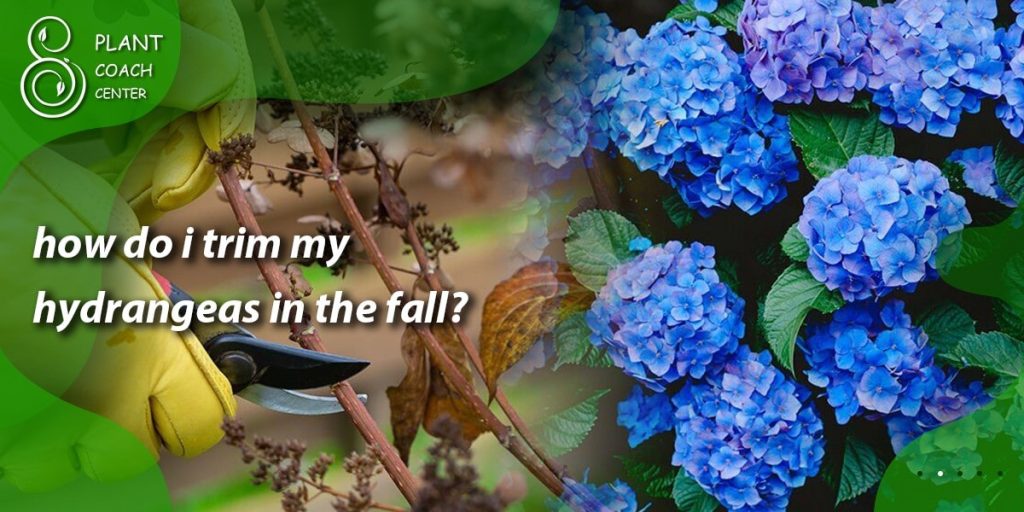
Fall Fine-Tuning
As summer’s warmth gradually gives way to autumn’s cool embrace, your hydrangeas embark on their own transition. The fall season brings a chance for fine-tuning – a process that prepares your plants for the dormancy that lies ahead while setting the stage for a magnificent return in the next growing cycle.
Fall is a time of reflection, and your hydrangeas benefit from carefully assessing their growth. Begin by trimming away faded or spent blooms, a practice known as deadheading. This enhances your garden’s visual appeal and directs the plant’s energy towards root development. Removing these blooms before they can set seed encourages the hydrangea to channel its resources into storing energy for the following year’s growth.
With the approach of winter, it’s also advisable to clean up fallen leaves and debris around the base of the plants. This tidying contributes to the overall aesthetic and helps prevent disease and pest issues that could otherwise overwinter in these areas.
For varieties that bloom on old wood, like bigleaf and oakleaf hydrangeas, it’s essential to exercise caution during fall pruning. Cutting back too much could mean sacrificing next year’s blooms. Instead, focus on selective trimming that removes only what’s necessary for the plant’s health and structure.
Fall is also a favorable time for transplanting or dividing mature hydrangeas. As the plant goes dormant, its energy is directed toward root development, making it a prime opportunity to adjust its location or propagate new plants from established ones.
By engaging in fall fine-tuning, you’re contributing to your hydrangeas’ overall resilience and longevity. As the leaves turn brilliant hues and the air carries a crisp edge, take the time to nurture your plants and help them gracefully embrace the coming winter. Your efforts now will yield a garden with the promise of renewed growth and vibrant beauty in the future seasons.
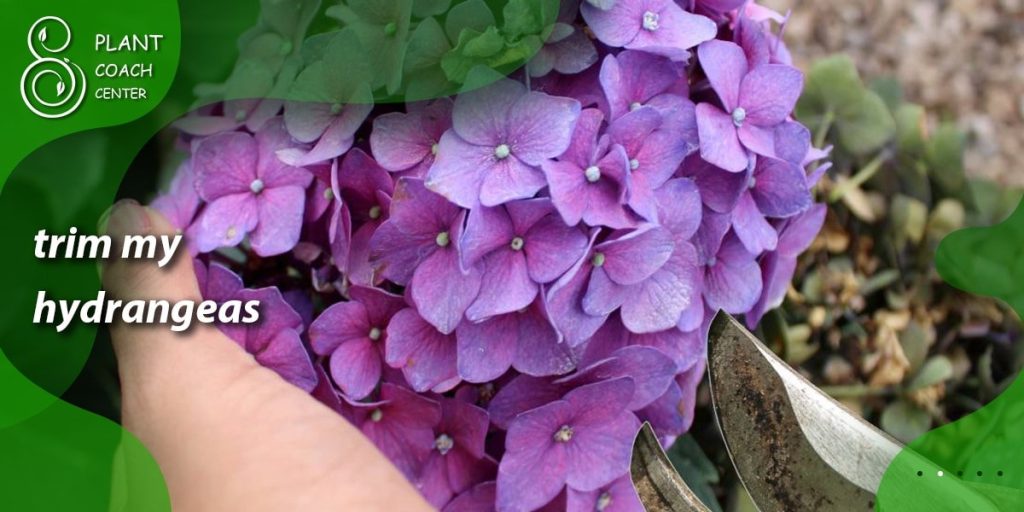
Beyond the Blooms
While the allure of hydrangeas is often centered around their stunning blooms, an entire world of growth and vitality exists beyond those petals. Beyond the colors lies a realm of rejuvenation, where strategic pruning can revitalize aging plants and stimulate new life. As the seasons shift and your hydrangeas evolve, your role as a caretaker extends to this aspect of their care.
Over the years, even the most vibrant hydrangea bushes may show signs of wear and tear. Wood might become woody, and branches could grow sparse. Enter rejuvenation pruning – a transformative technique that can breathe new life into your cherished plants.
This approach involves cutting back old, thick wood to encourage fresh growth from the base. While it might feel drastic, rejuvenation pruning is like a reset button for your hydrangeas, allowing them to bounce back with renewed vigor.
Rejuvenation pruning is best executed in late winter or early spring when the plant is dormant. While the rejuvenated hydrangea might take some time to regain its full splendor, the results are often worth the wait. Remember that not all hydrangea varieties respond equally well to this method, so it’s essential to research your plant’s specific needs before embarking on this journey.
Beyond the blooms, your hydrangeas also have a life cycle that extends to their later years. As plants age, their growth can become leggy and uneven. To maintain a balanced and aesthetically pleasing form, consider strategic thinning. Remove select branches that are crowding the center of the plant or growing erratically. This practice allows for better light penetration and airflow, contributing to the overall health of the hydrangea.
Understanding that their story goes beyond their blossoms is the key to nurturing their enduring vitality in the enchanting world of hydrangeas. By embracing rejuvenation pruning and strategic thinning, you’re playing a vital role in the ongoing narrative of your plants. Each cut is a gesture of care, a promise that the beauty of your hydrangeas will continue to evolve and captivate year after year.
Conclusion
As we’ve journeyed through the seasons of hydrangea care, we’ve uncovered a symphony of growth, beauty, and resilience at the heart of these captivating shrubs. From the delicate touch of winter pruning to the rejuvenating rhythms of spring, knowing when and how to trim your hydrangeas has become a choreography that intertwines your nurturing hands with nature’s grace.
As you walk this path, remember that your role as a steward extends beyond the blooms – it’s a commitment to the long-lasting vitality of your plants. So whether you’re embracing the seasonal shifts, deciphering growth patterns, or sculpting summer shapes, each moment invested in your hydrangeas becomes a chapter in their remarkable story.
For more tips, guidance, and a deeper dive into the world of plants, remember to visit PlantCouchCenter.com. With every cut and every bloom, you’re not just tending to a garden; you’re participating in a tale of beauty, growth, and the enduring connection between you and your flourishing hydrangeas.
When should I prune my hydrangeas?
Prune after flowering or in early spring for most varieties.
Can I trim hydrangeas in summer?
Yes, but focus on shaping and deadheading rather than extensive pruning.
Is fall a good time to prune?
Yes, for selective pruning to prepare plants for winter and encourage new growth.


